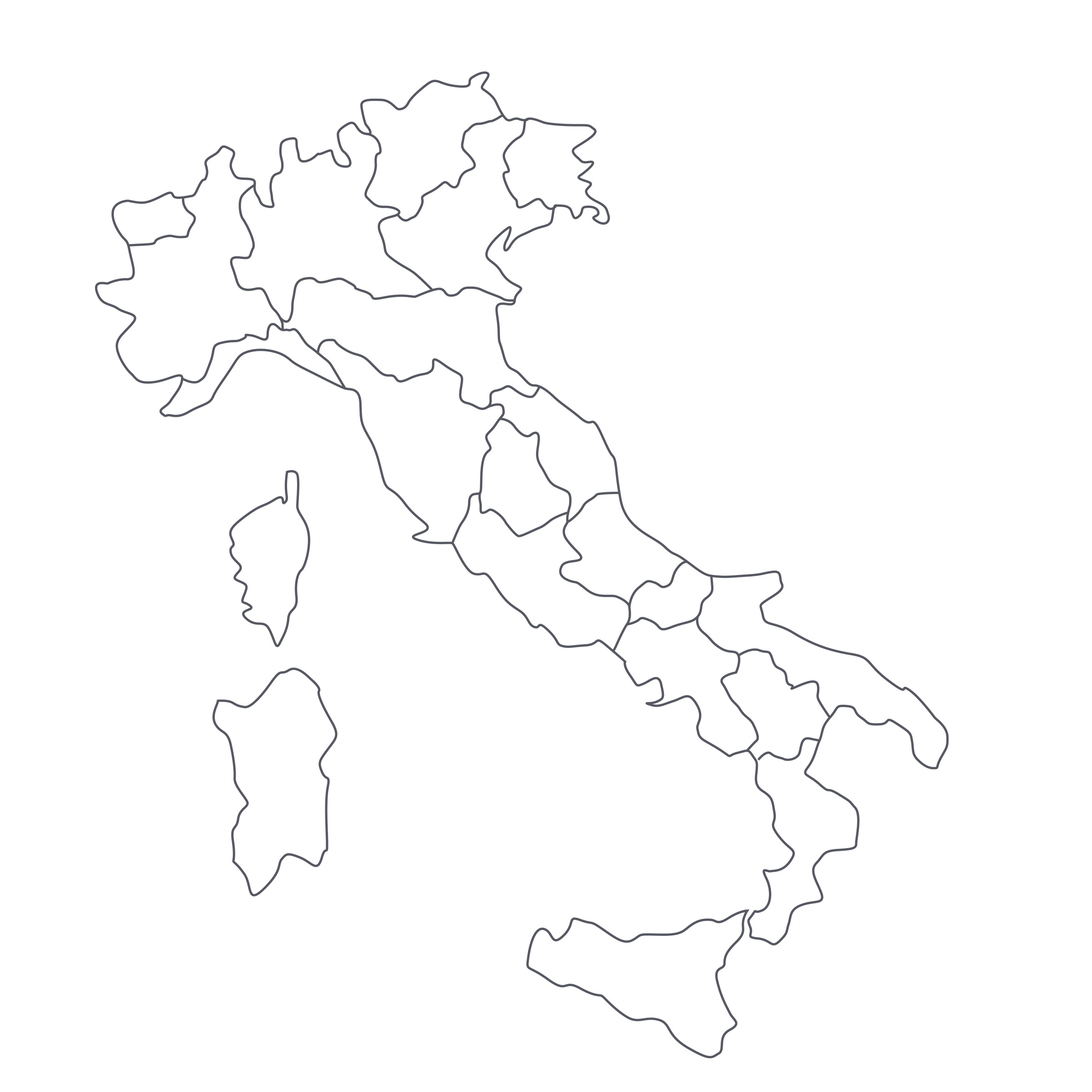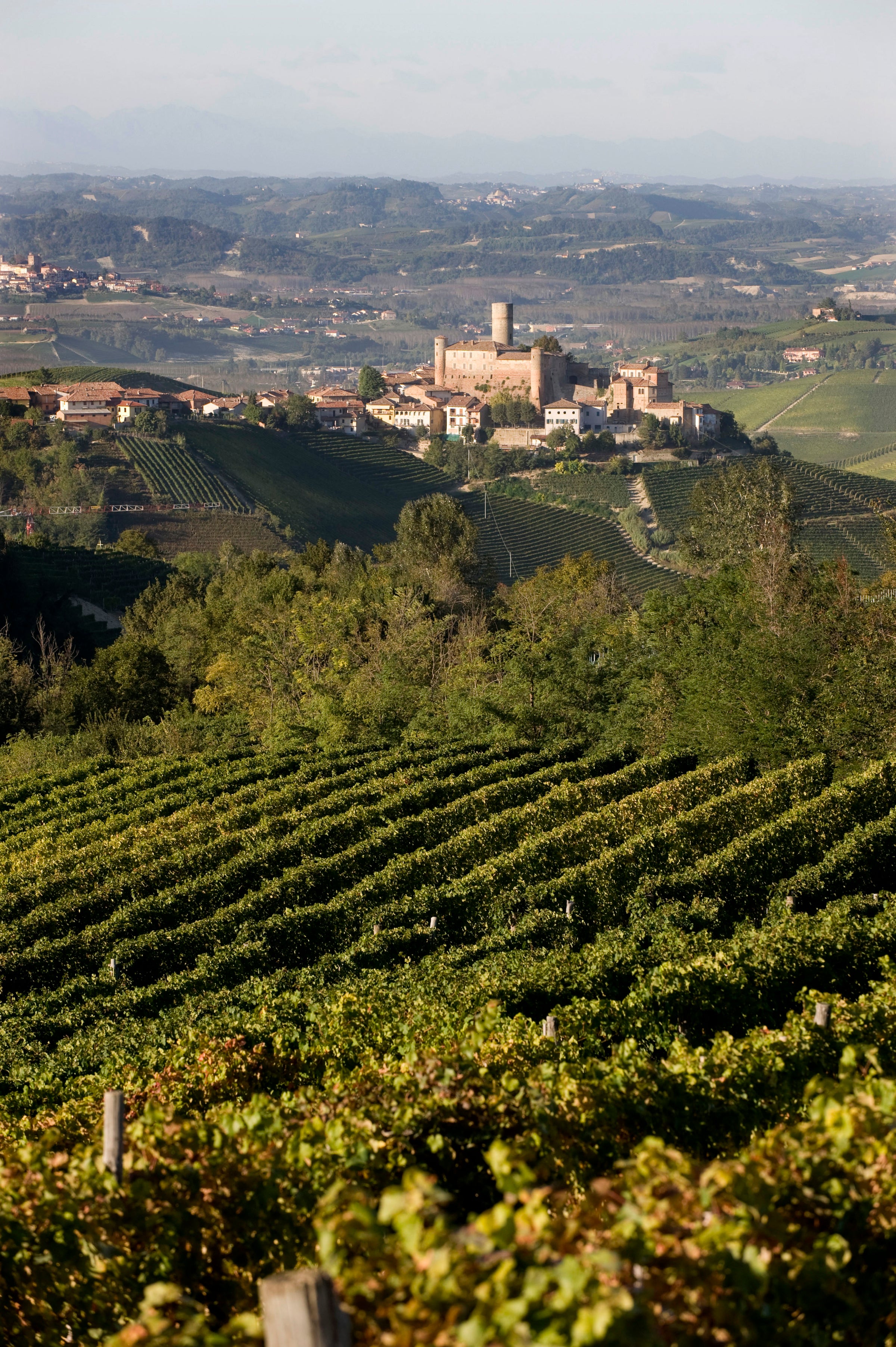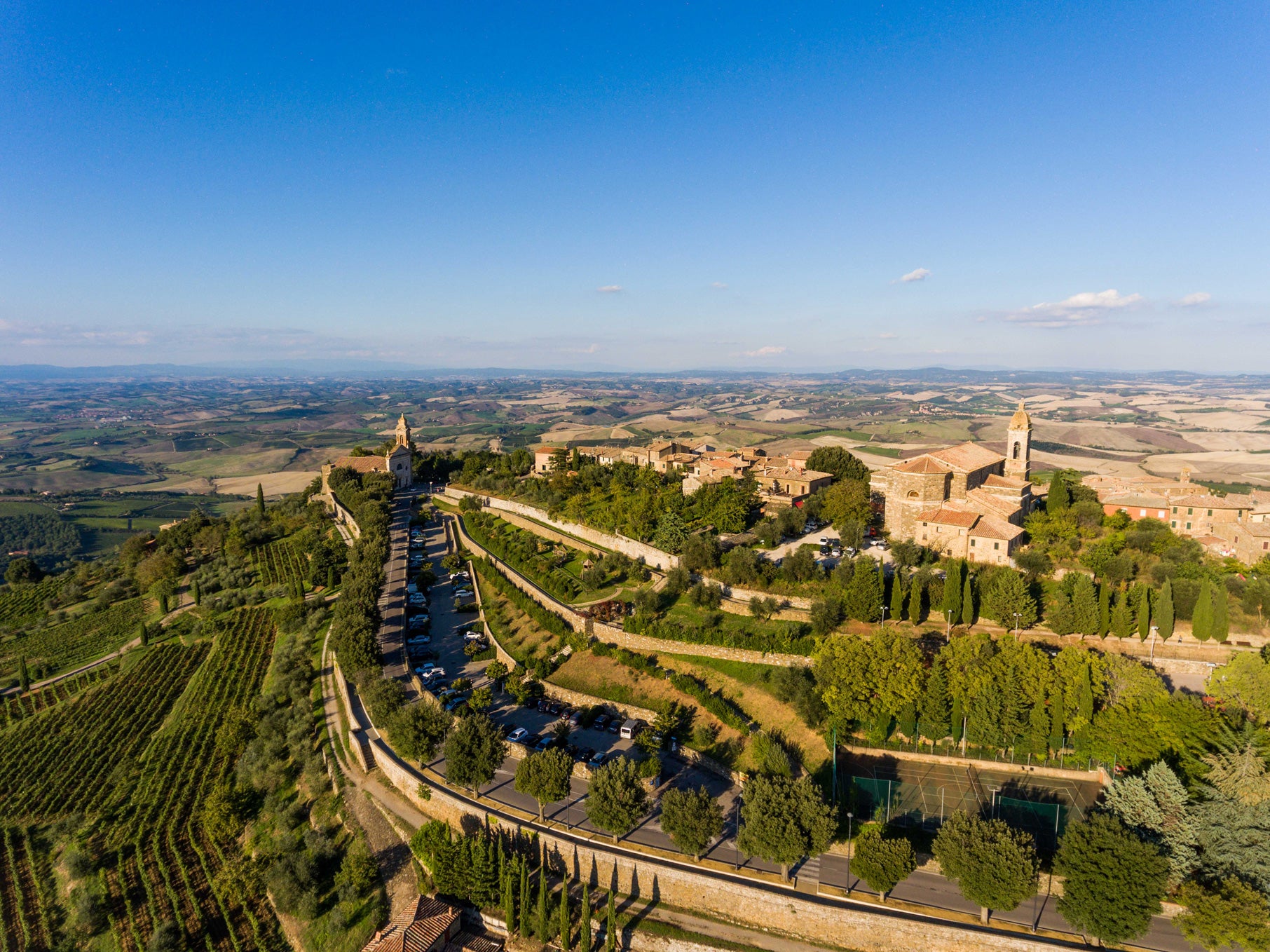Fresh from a visit to Tuscany’s Montalcino region, SommSelect Editorial Director David Lynch remarks on the great value of this wine and the ongoing evolution of Brunello di Montalcino wines in the modern era.
When Ian Cauble and I toured Montalcino last week, marveling at both the grand scale and the golden-hued beauty of the place, we tried to understand the vineyards of the appellation on a “Burgundian” level—a reflexive sommelier impulse to codify and classify, which, quite frankly, doesn’t work in Tuscany. Fact is, there’s no Burgundy-style hierarchy—or even a Barolo-style mapping of the top single vineyard sites—in Montalcino. We want there to be, because it would help us to better understand an important terroir, but, while some have tried, the ‘cru’ culture is effectively nonexistent here. If you are a Brunello drinker, you’ve perhaps heard talk about “north slope” versus “south slope” Montalcino, and how wines from the latter are characteristically darker and more extracted based on the more southerly aspect of their vineyards—except that there are countless examples on both slopes that defy such (simplistic) classification. This refined, high-toned Brunello from Podere Brizio is but one example: Grown and produced a stone’s throw from the great Case Basse di Soldera (perhaps the most dramatic debunker of south/north stereotyping), this is high-energy Montalcino Sangiovese at an extremely attractive price. There is a pretty broad style spectrum in Brunello di Montalcino these days, and Brizio’s 2012 is where I prefer to be on that spectrum—powerful, yes, but also bright and perfumed in the way Sangiovese is meant to be. Given the ever-inflating prices of wines coming out of this region, I’d suggest jumping on this very reasonably priced one.
As I’ve noted before, passing through the tiny, hilltop village of Montalcino proper and making one’s way south, toward the villages of Sant’Angelo in Colle and Castelnuovo dell’Abate, is a rather dramatic welcome to ‘Mediterranean’ Tuscany. Looking out from ‘south slope’ estates such as Podere Brizio, you can see the Tuscan landscape broaden and flatten as it stretches southward towards the province of Grossetto and the scrubby prairie known as the “Maremma.” The Mediterranean Sea is about 40 kilometers away as the crow flies. While the marl soils here are often very similar to those found up north in Chianti Classico, the climate is naturally geared toward “bigger” expressions of Sangiovese. But from there, you’ll encounter a fairly wide range of Brunello di Montalcino wines, despite the fact that all are (ostensibly) comprised of 100% Sangiovese. Some take on Bordeaux-like dimensions in terms of extract and oak influence; others are more linear, perfumed, and ‘Burgundian,’ in spirit at least if not exactly in scale. I’d place Podere Brizio’s ’12 in the latter camp.
The Podere Brizio estate was once part of a tract of land under the control of the Chiesa di Santa Restituta, the local parish church. The agricultural estate of the Chiesa was purchased by Roberto Bellini, an entrepreneur from Brescia, in 1970; the vineyards of Podere Brizio, which neighbor those of Santa Resitituta, were managed by Bellini’s company until he sold the Restituta property to Angelo Gaja (of Barbaresco fame) in 1996. Bellini subsequently bought a 50% interest in Podere Brizio, and was intimately involved in wine production there until the property came under the control of IAG Toscana, a firm which also owns the Dievole estate in Chianti Classico.
Now, Podere Brizio is a state-of-the-art winery sourcing from 11.5 hectares of vines planted at 300-350 meters elevation, in soils of marl and sandstone. Consulting enologist Alberto Antonini assists the on-site team with the winemaking, while agronomist Lorenzo Bernini supervises the vineyards, which are now certified organic (as we learned during our visit, the drive to not just convert to organics but to obtain certification is very much a trend in Montalcino; according to one friend, at least a quarter of the region’s vineyards have made the shift, with more coming online with each new vintage).
The 2012 vintage in Montalcino is known for powerfully structured wines, but for a quite hot and dry year, Brizio’s ’12 maintained that all-important freshness—so many Montalcino wines are ‘cooked’ these days, making a wine like this an especially refreshing discovery. In the glass it’s a deep garnet with the slightest hint of orange at the rim, with a perfumed, polished aromatic profile: It was aged 38 months in 54-hectoliter, untoasted French oak casks, and there’s a baking spice aroma here lending a luxurious accent note to the aromas of black cherry, black raspberry, citrus rind, fennel, tobacco, underbrush, and dried herbs. The tannins are fine-grained and ripe and the fresh acidity drives the wine through a long, aromatic finish. This is not about blunt force, it’s about persistence—which is what I appreciate about it most in an era of steroidal Sangiovese. If you’re enjoying a bottle now, decant it about 45 minutes before serving in Bordeaux stems at 60 degrees. Alternately, lay it down and re-visit it about 5-7 years from now, when it should be enjoying a beautiful peak. I’ve got some major bistecca fatigue after our recent trip, so I’m not going to go there: Instead, use the balsamic glaze in the attached recipe to bring out similar notes in the wine. Enjoy! — D.L.




